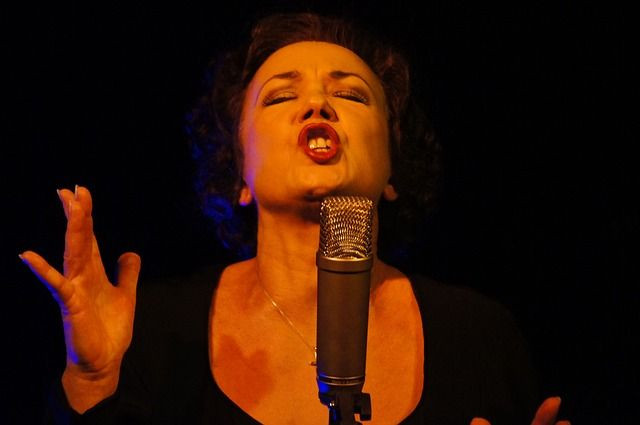Vocal Fry, Or 'Valley Girl' Sound, Is An Important Singing Technique, But Should It Be Used Sparingly?

While the general public may be more likely to think of the “vocal fry” voice technique as the guttural growl of Kim Kardashian, in music, the vocal fry is a proper singing technique used by performers to convey a wide range of emotion. However, when this unique singing voice should be used and when it should be saved for a more special occasion is still up for debate among voice experts.
"If you put on any recording of Britney Spears 'oh baby baby' — that is fry," said John Nix, an associate professor of voice and vocal pedagogy at the UTSA in a recent statement. This week at the 171st Meeting of the Acoustical Society of America (ASA) in Utah Nix gave a presentation on the fry, a popular speaking and singing technique that sounds a bit like a croak or growl. "It's a habit that we're hearing more and more in popular styles,” added Nix.
Our vocal chords control our speech, and usually when we talk the vocal chords vibrate rapidly as air passes between them, Mental Floss reported. In the case of a fry, however, the chords close together completely and then pop back open, creating a quintessential “frying” or hissing sound — hence the name.
The human ear can only hear tones between 20 and 20,000 Hertz, a measurement of sound frequency. Although 20 Hz is the absolute lowest tone a human can hear, the vocal fry at around 70 Hz is considered the lowest tone in the human singing register, or range of tones that the voice can make. However, just because it’s low does not mean it’s not natural, and musical training is not necessary for singers to achieve a vocal fry.
According to Nix’s presentation, just because every singer can make a fry doesn’t mean all singers equally use this technique. For example, pop singers use vocal fries far more often than opera and classical singers and Nix explained that this may not be due to the singer’s technique but rather the equipment they use on stage.
"You don't hear a classical opera singer who has to sing [without a] microphone to a 4,000-person audience using vocal fry," Nix added, "but someone who has a microphone next to their mouth does use it."
Nix’s talk also discussed when it’s best to use a fry, and suggests that despite the fry’s popularity in pop music it should be used sparingly by music students.
"I want my students to choose to do it for an expressive purpose," Nix said. "It is one of the tools that they have in their tool box. Use it wisely and judiciously, [and] save it for those times when you really want to express something."
However, not all singing coaches share Nix’s beliefs on sporadic fry use. Justin Stoney, founder of New York Vocal Coaching, told Medical Daily he believes the fry often gets overlooked for its many technical, stylistic, and even rehabilitation uses.
“I personally think with the vocal fry there is an inappropriate and inordinate amount of fear surrounding something that is not as bad for the voice as people say,” said Stoney.
Stoney explained that despite its harsh sound and scary name, the vocal fry is a completely natural voice that we all likely use at some point every single day. Stoney also agreed that while fry is mainly used in pop music and doesn't quite have a place in classical and opera, its ability to add an extra something to a song should not be underutilized.
“I am 100 percent sure that the fry is sustainable and something that can be used very positively if done appropriately,” said Stoney.
But whether you enjoy a handful of vocal frys in your singing style or prefer to save the technique to convey only the deepest emotions, one thing the experts agree on; the fry doesn't do any physical harm to your vocal chords. While, like any behavior, the fry could cause damage if overused over a long period of time, for now it seems like singing Britney Spears' “Hit Me Baby” every now and then at karaoke is harmless.
Source: Nix JP. Why fry? An exploration of the lowest vocal register in amplified and unamplified singing. 171st Meeting of the Acoustical Society of America (ASA). 2016



























